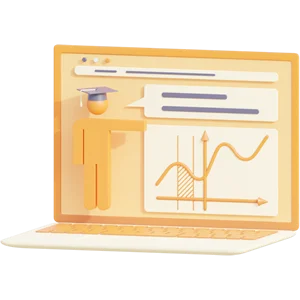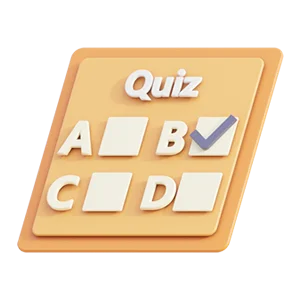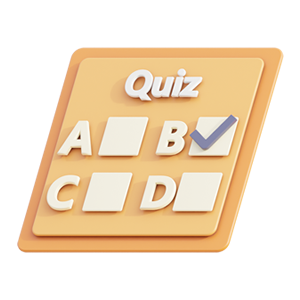Test Bank Primary Care Art and Science of Advanced Practice Nursing - An Interprofessional Approach 5th Edition Lynne M. Dunphy. All
Chapter 1. Primary Care in the Twenty-First Century: A Circle of Caring
1. A nurse has conducted a literature review in an effort to identify the effect of handwashing on the incidence of nosocomial (hospital-acquired) infections in acute care settings. An article presented findings at a level of significance of <0.01. This indicates that
A) the control group and the experimental group were more than 99% similar.
B) the findings of the study have less than 1% chance of being attributable to chance.
C) the effects of the intervention were nearly zero.
D) the clinical significance of the findings was less than 1:100.
Ans: B
Feedback: The level of significance is the level at which the researcher believes that the study results most likely represent a nonchance event. A level of significance of <0.01 indicates that there is less than 1% probability that the result is due to chance.
2. A nurse has read a qualitative research study in order to understand the lived experience of parents who have a neonatal loss. Which of the following questions should the nurse prioritize when appraising the results of this study?
A) How well did the authors capture the personal experiences of these parents?
B) How well did the authors control for confounding variables that may have affected the findings?
C) Did the authors use statistical measures that were appropriate to the phenomenon in question?
D) Were the instruments that the researchers used statistically valid and reliable?
Ans: A
Feedback: Qualitative studies are judged on the basis of how well they capture and convey the subjective experiences of individuals. Statistical measures and variables are not dimensions of a qualitative methodology.
3. Tracy is a nurse with a baccalaureate degree who works in the labor and delivery unit of a busy urban hospital. She has noticed that many new mothers abandon breast-feeding their babies when they experience early challenges and wonders what could be done to encourage more women to continue breast-feeding. What role is Tracy most likely to play in a research project that tests an intervention aimed at promoting breast-feeding?
A) Applying for grant funding for the research project
B) Posing the clinical problem to one or more nursing researchers
C) Planning the methodology of the research project
D) Carrying out the intervention and submitting the results for publication Ans: B
Feedback: A major role for staff nurses is to identify questions or problems for research. Grant applications, methodological planning, and publication submission are normally carried out by nurses who have advanced degrees in nursing.
4. A nurse has expressed skepticism to a colleague about the value of nursing research, claiming that nursing research has little relevance to practice. How can the nurses colleague best defend the importance of nursing research?
A) The existence of nursing research means that nurses are now able to access federal grant money, something that didnt use to be the case.
B) Nursing research has allowed the development of masters and doctoral programs and has greatly increased the credibility of the profession.
C) The growth of nursing research has caused nursing to be viewed as a true profession, rather than simply as a trade or a skill.
D) The application of nursing research has the potential to improve nursing practice and patient outcomes.
Ans: D
Feedback: The greatest value of nursing research lies in the potential to improve practice and, ultimately, to improve patient outcomes. This supersedes the contributions of nursing research to education programs, grant funding, or the public view of the profession.
5. A patient signed the informed consent form for a drug trial that was explained to patient by a research assistant. Later, the patient admitted to his nurse that he did not understand the research assistants explanation or his own role in the study. How should this patients nurse respond to this revelation?
A) Explain the research process to the patient in greater detail.
B) Describe the details of a randomized controlled trial for the patient.
C) Inform the research assistant that the patients consent is likely invalid.
D) Explain to the patient that his written consent is now legally binding.
Ans: C
Feedback: Just as the staff nurse is not responsible for medical consent, the staff nurse is not responsible for research consent. If patients who have agreed to participate exhibit ambivalence or uncertainty about participating, do not try to convince them to participate. Ask the person from the research team who is managing consents to speak with concerned patients about the study, even after a patient has signed the consent forms.
Multiple Selection
6. A nurse leader is attempting to increase the awareness of evidence-based practice (EBP) among the nurses on a unit. A nurse who is implementing EBP integrates which of the following? (Select all that apply.)
A) Interdisciplinary consensus
B) Nursing tradition
C) Research studies
D) Patient preferences and values
E) Clinical expertise Ans: C, D, E
Feedback: Fineout-Overholt, Melnyk, Stillwell, and Williamson define EBP as a problem-solving approach to the delivery of healthcare that integrates the best evidence from studies and patient care data with clinician expertise and patient preferences and values.
Multiple Choice
7. Mrs. Mayes is a 73-year-old woman who has a diabetic foot ulcer that has been extremely slow to heal and which now poses a threat of osteomyelitis. The wound care nurse who has been working with Mrs. Mayes applies evidence-based practice (EBP) whenever possible and has proposed the use of maggot therapy to debride necrotic tissue. Mrs. Mayes, however, finds the suggestion repugnant and adamantly opposes this treatment despite the sizable body of evidence supporting it. How should the nurse reconcile Mrs. Mayes views with the principles of EBP?
A) The nurse should explain that reliable and valid research evidence overrides the patients opinion.
B) The nurse should explain the evidence to the patient in greater detail.
C) The nurse should integrate the patients preferences into the plan of care.
D) The nurse should involve the patients family members in the decision-making process.
Ans: C
Feedback: Patient preferences should be integrated into EBP and considered alongside research evidence and the nurses clinical expertise; evidence does not trump the patients preferences. The family should be involved, but this is not an explicit dimension of EBP. Similarly, explaining the evidence in more detail is not a demonstration of EBP.
8. The administrators of a long-term care facility are considered the use of specialized, pressure- reducing mattresses in order to reduce the incidence of pressure ulcers among residents. They have sought input from the nurses on the unit, all of whom are aware of the need to implement the principles of evidence-based practice (EBP) in this decision. Which of the following evidence sources should the nurses prioritize?
A) A qualitative study that explores the experience of living with a pressure ulcer
B) A case study that describes the measures that nurses on a geriatric unit took to reduce pressure ulcers among patients
C) Testimonials from experienced clinicians about the effectiveness of the mattress in question
D) A randomized controlled trial that compared the pressure-reducing mattress with standard mattresses
Ans: D
Feedback: The most reliable evidence is considered RCTs. Qualitative studies, case studies, and expert opinion are low on the hierarchy of evidence.
9. Hospital administrators are applying the principles of evidence-based practice (EBP) in their attempt to ascertain the most efficient and effective way to communicate between nurses who are on different units, a project that will consider many types of evidence. Which of the following information sources should the administrators prioritize?
A) A systematic review about communication in nursing contexts
B) Nurses ideas about communication methods
C) The results of a chart review
D) The hospitals accreditation status Ans: A
Feedback: Systematic reviews are assigned a high value in EBP. Reviews would be prioritized over nurses ideas or a chart review, though both are potential considerations. The hospitals accreditation status is not a relevant consideration.
10. A nurse has resolved to apply the evidence-based practice (EBP) process to the way that admission assessments are conducted and documented on a unit. How should the nurse begin the process of establishing EBP?
A) Gather evidence showing the shortcomings of current practices
B) Formulate a clear and concise question to be addressed
C) Elicit support from the nurses who are most often responsible for admissions
D) Search the literature for evidence that is potentially relevant to the practice need Ans: B
Feedback: The first step in applying EBP is to ask a clear, focused question. This should precede a search of the literature or the recruitment of participants. An assessment of the shortcomings of the current system is not an explicit component of the EBP process.
11. Which of the following questions best exemplifies the PICOT format for asking evidence-based questions?
A) What affect does parents alcohol use have on the alcohol use of their teenage children?
B) Among postsurgical patients, what role does meditation rather than benzodiazepines have on anxiety levels during the 48 hours following surgery?
C) Among high school students, what is the effectiveness of a sexual health campaign undertaken during the first 4 weeks of the fall semester as measured by incidence of new sexually transmitted infections?
D) In children aged 68, is the effectiveness of a descriptive pain scale superior to a numeric rating scale in the emergency room context?
Feedback: The correct answer includes a population (postsurgical patients), intervention (meditation), comparison (benzodiazepines), outcome (anxiety levels), and a time frame (48 hours). No other option contains each of the five elements of a PICOT question.
12. A nurse has made plans to implement the University of North Carolina (UNC) model of 5 As during the process of applying evidence-based practice (EBP) to a practice problem. What is the final step that the nurse will take in applying this model?
A) Analyze the results
Preview document (3 of 531 pages)
Knoowy benefits
$ 33,22
 Money back guarantee
Money back guarantee
 Documents can be downloaded immediately
Documents can be downloaded immediately
 $0.50 discount when paying with balance
$0.50 discount when paying with balance
-
 Receive free quiz questions with document
Receive free quiz questions with document

Specifications
- School: Chamberlain College Of Nursing
- Course: NURSING
- Year of study: 2023/2024
Document
- Section: Examinations
- Made on: 10-26-2023
- Type: .pdf
- Pages: 531
- Language: English
Tags
Seller
Earn from your summaries?
Subjects of NURSING - Chamberlain College Of Nursing
More NURSING ›ati ati comprehensive predictor ati fundamentals proctored ati nutrition ati pharmacology ati rn comprehensive predictor comprehensive fundamentals health care health care / nursing health care/ nursing hesi hesi rn exit maternal newborn med surg medical nursing medical surgical mental health nurs nursing nursing & health pediatrics pharmacology test bank tncc
 Deal: get 10% off when you purchase 3 or more items!
Deal: get 10% off when you purchase 3 or more items!
Deal: get 10% off when you purchase 3 or more items!









